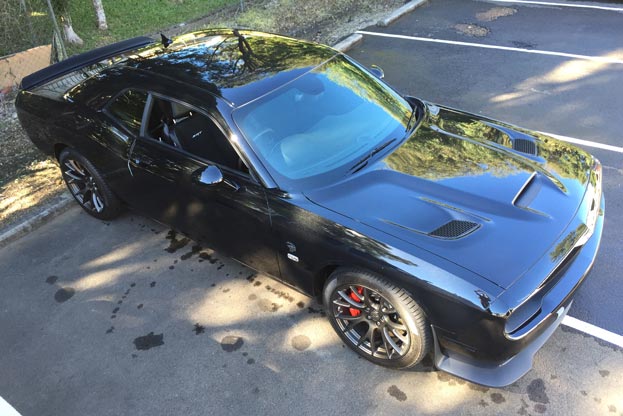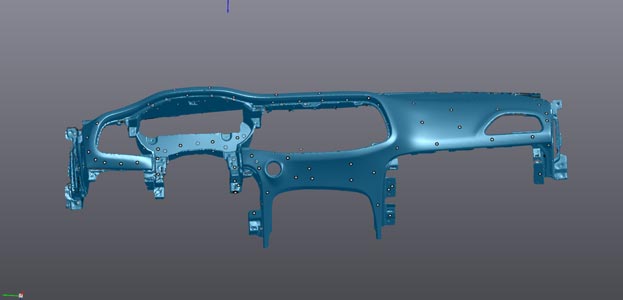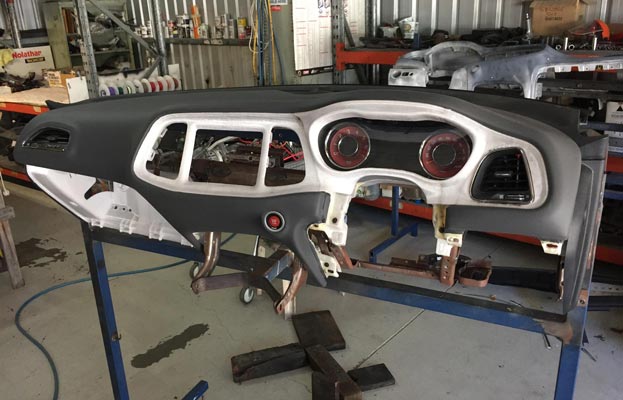November 11, 2024
Mining engineering firm opens new service segment thanks to 3D scanners See the articleIt’s a well-known fact that in Australia, like in England, people drive on the left side of the road, therefore the cars are configured to be driven right sided. While there is a wide selection of cars on the Australian market … foreign importation, including many American cars, is nonetheless a relatively popular “thing.” Why? Cars in Australia are much more expensive than they would be elsewhere, the AUS dollar is high and … maybe the Land Down Under is much more of a car–obsessed country than we North Americans previously thought?
Companies like Stangfever International assist Australians in importing, clearing and transforming their American dream car. However, it goes without saying that when American vehicles make it there, they cannot simply be taken for a spin considering their driving–from–the–left configuration. Hence emerges a need for converting left-hand-driven cars to right–hand.
Left to right: not as simple as it seems
Recently, Stangfever enrolled Simply 3D, a small company providing end–to–end 3D scanning and 3D printing services, to perform such a conversion on a 2015 Dodge Challenger Hellcat.
Converting a car for right-hand driving can be quite a complex task, one which unfortunately does not merely involve switching parts to the other side!
For one, there are a lot of parts involved: for this specific project, Simply 3D’s Brad Jack worked on 15 different parts, including the dashboard, AC system, glovebox and center console. While some can be “mirrored” then fitted in a relatively straightforward manner, others need further adaptation.
And while there is a demand for such work to be performed, the case–by–case and model–by–model needs will never justify such parts to be mass manufactured in the automotive industry, so the components for right-hand driving will likely never be readily available.
Creating a whole new market
What makes Jack so enthusiastic about Creaform portable 3D scanners is that it made it possible to “create an entire new market” for the tuning industry, one that “didn’t exist before … for custom and aftermarket automotive parts.”
The project therefore was conducted as a “proof–of–concept” for Stangfever, one that could bring a digital solution to a very labour–intensive industry.
The project aimed at achieving 3 things:
- Reducing the production lead time
- Reducing production costs
- Improving overall quality.
Needless to say, the finished Aussie-ready Challenger easily ticked all three boxes revealing an interesting new market opportunity.
Benefits of the portable 3D scanners
The Simply 3D mandate was to scan, reverse engineer and print all the components needed to convert the car. Jack used a Creaform portable 3D scanners supplied by Hi-Tech Metrology in Australia to perform the scanning task, which he described as “a great product.” Thanks to its ease of use and speed, the portable 3D scanner pulled everything together, since “this project was not possible without the scanner, mainly because I couldn’t have processed the plethora of parts that I received in either a timely or cost-effective manner,” he explained. Jack also expressed that he is appreciative of the ongoing level of after sales support from Hi-Tech Metrology.
The 3 main benefits behind the portable 3D scanners were put forward in this project: TRUsimplicity, which made 3D scanning very accessible to all users, TRUaccuracy, which preserved the integrity of the original parts, and TRUportability, which made scanning directly in the body shop, and from all angles in the car, a cinch.
The greatest gain in using this 3D scanning, modelling and then printing, has been to “be able to maintain all of the feature curves on the parts. That is exceptionally difficult and time consuming to do with fibreglass,” the traditional manner.
We sincerely hope that the (left side driving) road to success lies ahead for Simply 3D! and of course, that the portable 3D scanners will continue helping to get there.











